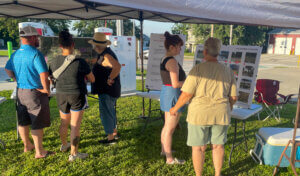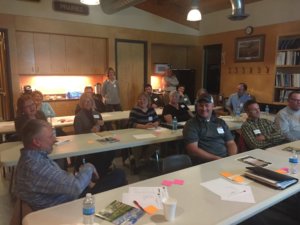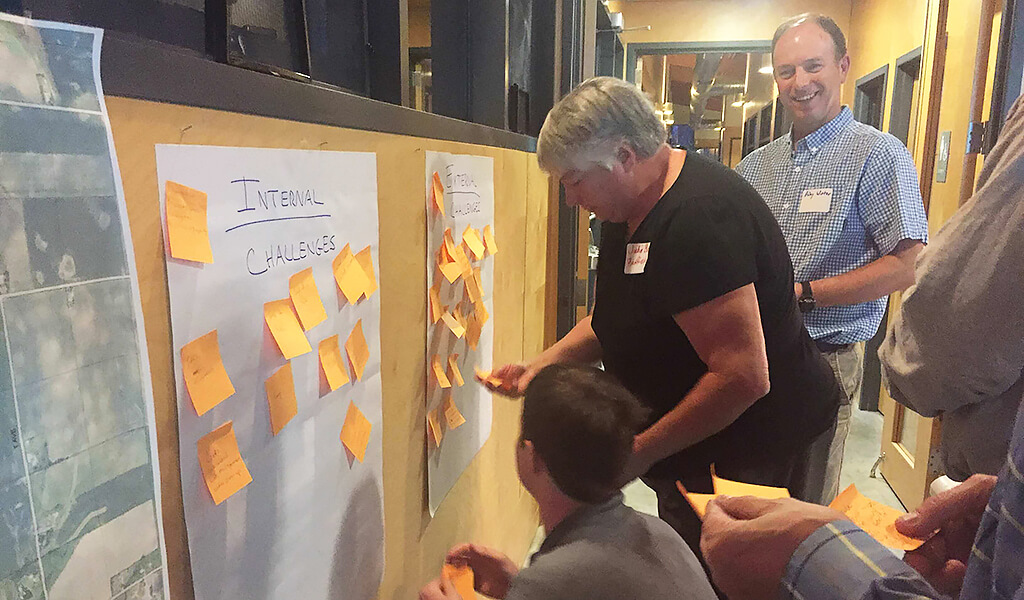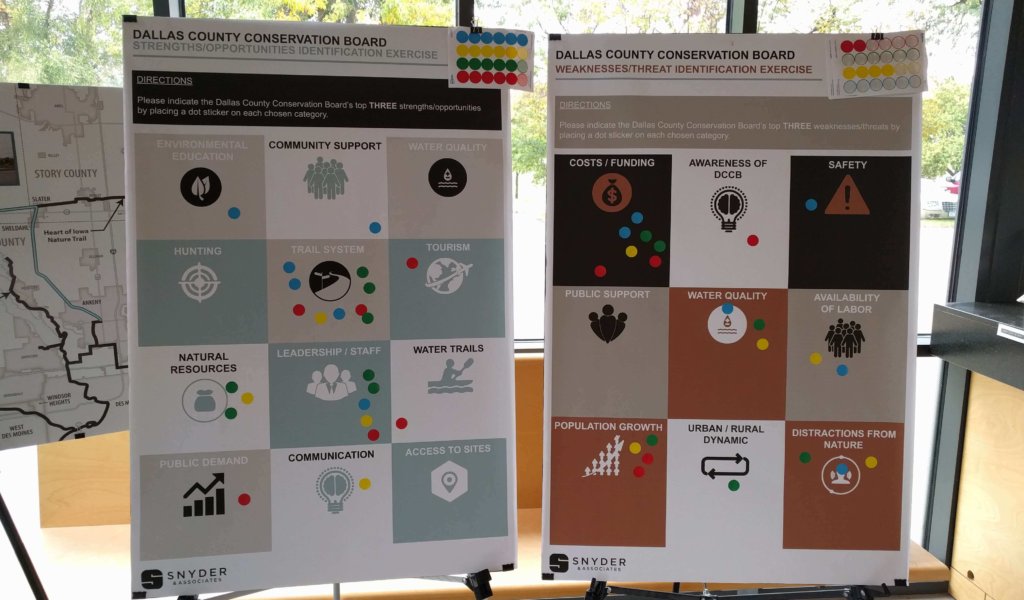
Five Year Plan Provides Roadmap for Success
Covering one of the fastest-growing counties in the state of Iowa, the Dallas County Conservation Board (DCCB) has the arduous task of acquiring and developing county parks, preserves, forests, wildlife, and other conservation resources. Additionally, they provide environmental programming to cultivate citizenship and conservation ethics while also setting board policy and overseeing the activities of their staff.
Recognizing the need for a strategic and targeted plan to help drive their mission, the board brought the planning team with Snyder & Associates into the fold. Our team provided professional planning, visioning, and graphic design services to assist in the development of the Dallas County Conservation Board Strategic Plan.
The strategic plan for DCCB created a vision that looked five years into the future to identify trends and issues against which the organization could align its priorities. It was also designed to help them understand the challenges they should focus their attention and resources on, understand the key beneficiaries and what they need, and determine the most effective and efficient way to achieve their mission. The plan was also necessary to guide budgeting and decision-making over the five-year period.
Step-by-Step Planning Process Achieves Results

A meeting with the Strategic Plan Committee.
Our team helped guide the plan development process by first establishing the purpose of the plan. During this process, the planning team recognized seven targeted areas of concern:
- Identify opportunities and challenges facing the board
- Determine public satisfaction and knowledge of existing programs and facilities
- Determine public priorities for programming and facilities
- Identify marketing options including key messages and themes
- Develop goals along with short, mid, and long-term objectives
- Identify evaluation metrics for each objective
- Determine an implementation process and an appropriate update cycle
SWOT Analysis Provides Plan Metrics
Our comprehensive planning process included a visioning component in coordination with the Strategic Plan Committee (SPC), through a community survey, and in conjunction with a public engagement meeting. This visioning process took place over a series of meetings with the SPC, which included board members, volunteers, and staff. The first meeting identified the strengths and weaknesses of the DCCB during a SWOT (strengths, weaknesses, opportunities, and threats) analysis activity.
DCCB Strengths & Opportunities
- Environmental and nature education programs
- Opportunity for water trails
- Number and usage of multi-purpose and hiking trails
- Community support
- Marketing materials
- Leadership, dedicated staff
- Public demand
- Accessibility
DCCB Weaknesses & Threats
- Costs and funding assistance sources
- Retiring leadership, workload burden for staff
- Politics
- Lack of support or resources for water quality initiatives
- Low volunteerism, burnout of existing volunteers
- Safety (low-head dams and liability concerns)
- Negative public perception
- Urban-rural dynamics
- Distractions from nature
- Population growth and sprawl in the eastern portion of the county (western Des Moines metro area)
Identifying Goals for Future Growth & Development
Our team also put together an opinion survey for the public. Over 400 people participated and completed the opinion survey, which was well above the target rate to provide statistically significant analysis of the results. Based on the survey results and meetings with the Strategic Plan Committee, four goals were developed to guide the DCCB over the next five years:
- Improve public awareness of the DCCB
- Increase recreational and environmental tourism
- Improve ecological management and environmental education
- Enhance the quality of parks and recreational opportunities
The goals were divided into two categories — strategic marketing and environmental/ecology. Each goal was given a corresponding set of objectives with evaluation criteria for achieving each objective. Adopted for use by the Dallas County Conservation Board in 2017, the plan is largely designed around facilitating increased awareness of the DCCB, its properties, and its programs.
As the majority of the trail system in rural Dallas County is constructed, the future beyond this plan may shift the focus away from awareness and marketing to historical and ecological preservation and recreational management. Ideally, with the rapid increase in the southeast portion of the county and increased visibility and awareness of the Conservation Board, more financial resources will be available in the future for the implementation of current and future goals and objectives.

